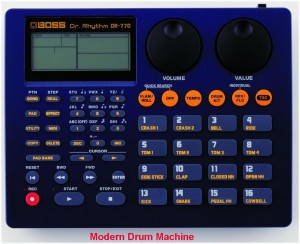This is the second of a series of three discussions on how to practice, for improving your guitar playing. If you missed the first article you can access it at How to Practice, Part I. I have had remarkable success guiding students through these processes to maximize their progress in learning the guitar and maximizing their ability to express themselves in any genre.
This discussion is about one of the biggest traps that guitarists find themselves falling into, and what to do about. This one concept is virtually guaranteed to make you a more in demand asset to any music group you ever play with.
Over the years, it’s been my observation that as guitarists are practicing their instrument and working to improve their skillset, they generally sit in their practice area and play alone. There is an inherent difficulty with this approach. Unless the guitarist has mastered the ability to have perfect meter and locked in tempo, they tend to meander in an almost rubato way. This is not necessarily problematic if they are destined to play solo every time they perform, but it is the kiss of death if they intend to play in an ensemble of some sort with other instruments.
When musicians perform together, they must play as a collective. The referent that they must use to hold the performance together is the beat, the meter, rhythm, and tempo of the song they are performing. If any of the players in the ensemble can’t lock to the pulse of the music, the overall performance begins to disintegrate and sound sloppy. Guitarists who spend the majority of their time playing by themselves seem to be the worst offenders. They have to learn how to play in the pocket, or groove, and since all of their practice time has been spent playing loosely in their own world, this is not so easy for them to do.
 What can be done about this? The most basic recommendation I can make, is to ALWAYS practice with a metronome. That alone does two beneficial things for you as a guitarist, simultaneously. Firstly, you are training yourself to play with rhythmic precision. I’m not suggesting playing mechanistically, without heart and feeling, but learning to infuse your playing with passion in context to the beat, rhythm, and meter. If you play with a metronome, and you are extremely observant about the clicks as they relate to where your notes fall, you will slowly but surely begin to play with acute rhythmic awareness. And I’m not suggesting that you will never be able to play solo lines freely, in a rubato style, against the rhythm section of your band.
What can be done about this? The most basic recommendation I can make, is to ALWAYS practice with a metronome. That alone does two beneficial things for you as a guitarist, simultaneously. Firstly, you are training yourself to play with rhythmic precision. I’m not suggesting playing mechanistically, without heart and feeling, but learning to infuse your playing with passion in context to the beat, rhythm, and meter. If you play with a metronome, and you are extremely observant about the clicks as they relate to where your notes fall, you will slowly but surely begin to play with acute rhythmic awareness. And I’m not suggesting that you will never be able to play solo lines freely, in a rubato style, against the rhythm section of your band.
Secondly, using a metronome allows you to have an external metric to help you evaluate where you are as you learn a song or practice your scales, modes, and arpeggios. Just like a sprinter can keep a record of their 100 meter times as they train to become a faster sprinter, or a body builder can measure the growth of their muscle mass over a period of workouts, a guitarist can keep a log book of the tempos at which they can play through their scales, mistake free, gradually increasing the metronome tempo as they improve. If you use the tempo of the song you want to play as a target value, but begin playing the song slower, as your technique allows, you can inch up the tempo as you progress until you reach your target value.
 Now for the ultimate experience of practicing music, we are going to need a little bit more advanced equipment. You see, as great as a metronome is as a tool for practicing, it has an inherent limitation. The metronome only has a single click per beat. It doesn’t have the ability to convey the subtle, secondary aspects of rhythm, such as duple or triple meter, syncopated rhythms or upbeat or backbeat accents. In order to get the true feel of those elements you either need to assemble your band every time you want to personally practice your parts or you need to use a drum machine or some other type of drum program. With such a tool, you will hear all the nuances of the rhythmic structure you are playing against and will better know what notes to accent, and even where to play notes rhythmically to communicate the song you are intending to play at the highest level.
Now for the ultimate experience of practicing music, we are going to need a little bit more advanced equipment. You see, as great as a metronome is as a tool for practicing, it has an inherent limitation. The metronome only has a single click per beat. It doesn’t have the ability to convey the subtle, secondary aspects of rhythm, such as duple or triple meter, syncopated rhythms or upbeat or backbeat accents. In order to get the true feel of those elements you either need to assemble your band every time you want to personally practice your parts or you need to use a drum machine or some other type of drum program. With such a tool, you will hear all the nuances of the rhythmic structure you are playing against and will better know what notes to accent, and even where to play notes rhythmically to communicate the song you are intending to play at the highest level.
Please consider this as a massive leg up in developing an approach to your practice time that will help you reap the harvest of magnificent rhythmic playing. This is without a doubt a golden nugget in any discussion of how to practice.
If you are still looking for ways to significantly improve your guitar playing beyond just learning how to practice, please call the Guitar Lesson Expert for your complimentary 15 minute phone consultation.
